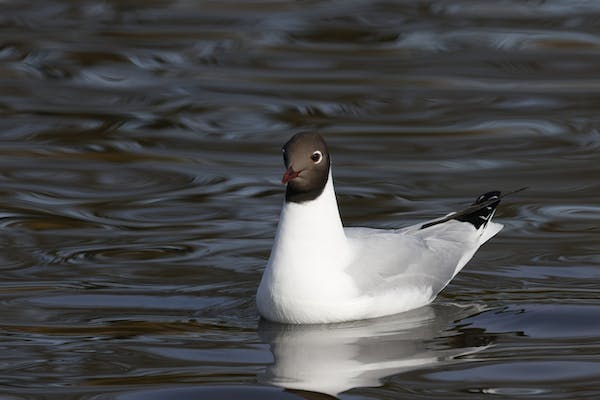The Grey-headed Gull, also known as Grey-hooded Gull and Chroicocephalus cirrocephalus, is a small gull species that breeds patchily in parts of Africa and South America. It is not a migratory gull, rather it is more widespread during winter season. This species occurs as a rare vagrant in Italy, North America, and Spain. Like other gull species, the Grey-headed Gull is categorized under the genus Larus. This genus is considered the greatest species diversity across the Northern Hemisphere due to its worldwide distribution. The Grey-headed Gull’s closest relatives include the Pacific Gull, Belcher’s Gull, Western Gull, Glaucous Gull, Vega Gull, and European Herring Gull.
The Grey-headed Gull was first described by French ornithologist Louis Pierre Viellot in 1818. Since this species appears to have an extremely large range, they are far from the thresholds for Vulnerable under the range size measure. The Grey-headed Gull’s population appears to be stable and in an upward trend. Likewise, the current population size is large. For these reasons, the International Union for Conservation of Nature (IUCN) Red List listed this gull species as Least Concern.
Its seven levels of scientific classification are as follows:
Kingdom: Animalia
Phylum: Chordata
Class: Aves
Order: Charadriiformes
Family: Laridae
Genus: Chroicocephalus
Species: C. cirrocephalus
The physical characteristics of a Grey-headed Gull
This gull species is described as slightly larger than its close relative, the Black-headed Gull, measuring at 42 cm length. As its name suggests, an adult Grey-headed Gull possesses a grey head, grey body (darker than that of a Black-headed Gull), an elegant red bill and legs that make them a wonderful sight to behold. It has black tips to the primary wings, which consist of conspicuous white “mirrors.” Its underwing has dark grey feathers with black wingtips. Its grey hood disappears during winter, leaving only dark streaks during the summer time.
Both male and female Grey-headed Gulls share similar physical characteristics, although the South American race is paler-black and larger than the African race. The African race recognizes two subspecies: the C. c. cirrocephalus and C. c. poliocephalus. It takes two full years before the Grey-headed Gull reaches maturity. During their first year after hatching, birds have black terminal tail bands and have more dark regions in the wings. When in flight, a wintering Grey-headed Gull becomes a beautiful view up above—its pale grey body, grey head, and gradient black and grey wings make it a wonderful bird to appreciate and watch.
An immature Grey-headed Gull has a white head with dark streaks behind eyes on nape, which differs it from Hartlaub’s Gull in having subtle brown legs, a long flesh-colored bill with a dark tip, and a black tip of the tail.
The distribution and habitat of Grey-headed Gulls
Grey-headed Gulls are resident in several parts of Africa, particularly in South Africa, Mozambique, Madagascar, Tanzania, Botswana, and Zimbabwe. They are considered vagrants in other parts of southern and central Africa. In South America, Grey-headed Gulls are present in southern Brazil, western Ecuador, western Colombia, and western Peru. These birds are rare vagrants of Uruguay, Paraguay, and central Brazil.
Grey-headed Gulls are commonly found in various wetlands and coastal areas such as salt lakes, fresh water lakes, marshes, and rivers. They frequent coastlines and estuaries but they seldom wander far from land.
The behavior of a Grey-headed Gull
Grey-headed Gulls breeds in large colonies in marshes and reedbeds. They can also flock in hundreds or even thousands when feeding in areas with favorable conditions. When in colonies, they become noisier. They produce a raucous crow-like call that sounds like “caw caw.”
A female Grey-headed Gull lays two to three eggs in a nest, which is situated on a ground or floating in water.
Like other gull species, Grey-headed Gulls are highly gregarious birds during winter, both when feeding and when roosting in the evening. Although highly coastal or estuarine, Grey-headed Gulls are not pelagic species, which are commonly referred to species which live and feed away from the bottom of lakes and seas.
The diet of a Grey-headed Gull
Since they are commonly found in water sources, it is no surprise that their diet will mainly consist of fish, invertebrates, and eggs. They also scavenge on dead meat of mammals and they forage at garbage disposal sites.
BOTSWANA BIRDS | SOUTH AFRICA BIRDS
NAMIBIA BIRDS | ZAMBIA BIRDS | ZIMBABWE BIRDS

